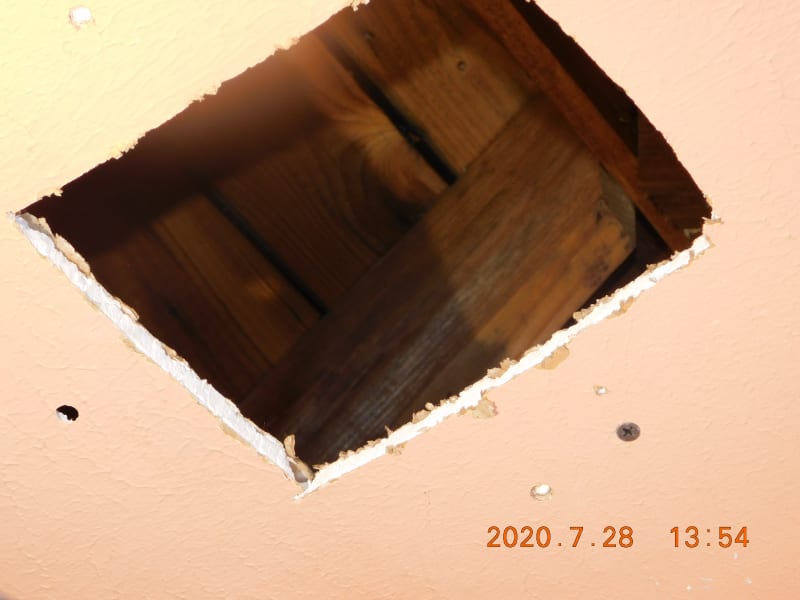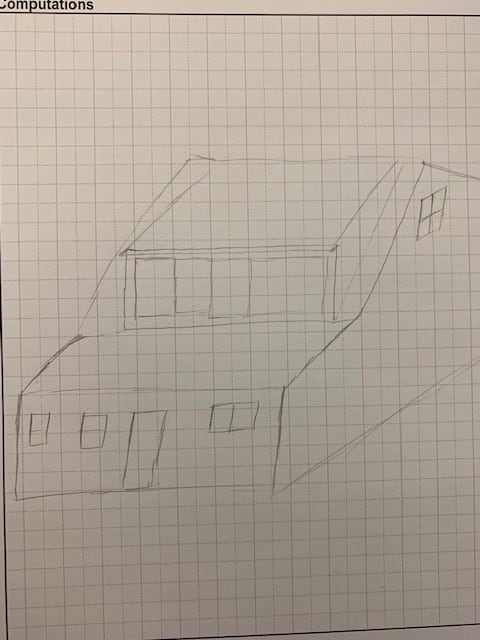Simba13
Structural
- May 19, 2020
- 105
Afternoon everyone,
We've been asked to design a full shed dormer across the back of an older house. I took a look at the roof, the owner cut a hole so I could see the framing. It's a rafter roof, rafters are 2x6's at 24" O.C. attached to a ridge board/plate. I'm trying to keep the renovation under 30% of the roof area so that the rehabilitation code doesn't kick everything in the house to IBC (I'm sure there would be no end to the number of code violations this house would have if you really dug into it, those rafters I mentioned for starters). But it's a nice family that just wants a bit more light and room upstairs for their kids so I soldier on![[morning] [morning] [morning]](/data/assets/smilies/morning.gif) . I guess the way we would go about this, is that we cut the roof at the edges of the dormer, something would have to be done at the ridge before jacking the roof up and then framing a wall under the edge of the raised roof... Can a ridge board, not beam, even accommodate this kind of thing? We'd be decreasing the pitch of the roof in that area by a significant amount so there are probably some snow load implications. I'll obviously consult my boss before going forward but I wanted to wrap my head around this a bit before I do.
. I guess the way we would go about this, is that we cut the roof at the edges of the dormer, something would have to be done at the ridge before jacking the roof up and then framing a wall under the edge of the raised roof... Can a ridge board, not beam, even accommodate this kind of thing? We'd be decreasing the pitch of the roof in that area by a significant amount so there are probably some snow load implications. I'll obviously consult my boss before going forward but I wanted to wrap my head around this a bit before I do.
I have an idea for a TV show if anyone wants to capitalize on it, "DIYers do the craziest things"![[2thumbsup] [2thumbsup] [2thumbsup]](/data/assets/smilies/2thumbsup.gif)
Thanks,
We've been asked to design a full shed dormer across the back of an older house. I took a look at the roof, the owner cut a hole so I could see the framing. It's a rafter roof, rafters are 2x6's at 24" O.C. attached to a ridge board/plate. I'm trying to keep the renovation under 30% of the roof area so that the rehabilitation code doesn't kick everything in the house to IBC (I'm sure there would be no end to the number of code violations this house would have if you really dug into it, those rafters I mentioned for starters). But it's a nice family that just wants a bit more light and room upstairs for their kids so I soldier on
![[morning] [morning] [morning]](/data/assets/smilies/morning.gif) . I guess the way we would go about this, is that we cut the roof at the edges of the dormer, something would have to be done at the ridge before jacking the roof up and then framing a wall under the edge of the raised roof... Can a ridge board, not beam, even accommodate this kind of thing? We'd be decreasing the pitch of the roof in that area by a significant amount so there are probably some snow load implications. I'll obviously consult my boss before going forward but I wanted to wrap my head around this a bit before I do.
. I guess the way we would go about this, is that we cut the roof at the edges of the dormer, something would have to be done at the ridge before jacking the roof up and then framing a wall under the edge of the raised roof... Can a ridge board, not beam, even accommodate this kind of thing? We'd be decreasing the pitch of the roof in that area by a significant amount so there are probably some snow load implications. I'll obviously consult my boss before going forward but I wanted to wrap my head around this a bit before I do. I have an idea for a TV show if anyone wants to capitalize on it, "DIYers do the craziest things"
![[2thumbsup] [2thumbsup] [2thumbsup]](/data/assets/smilies/2thumbsup.gif)
Thanks,


